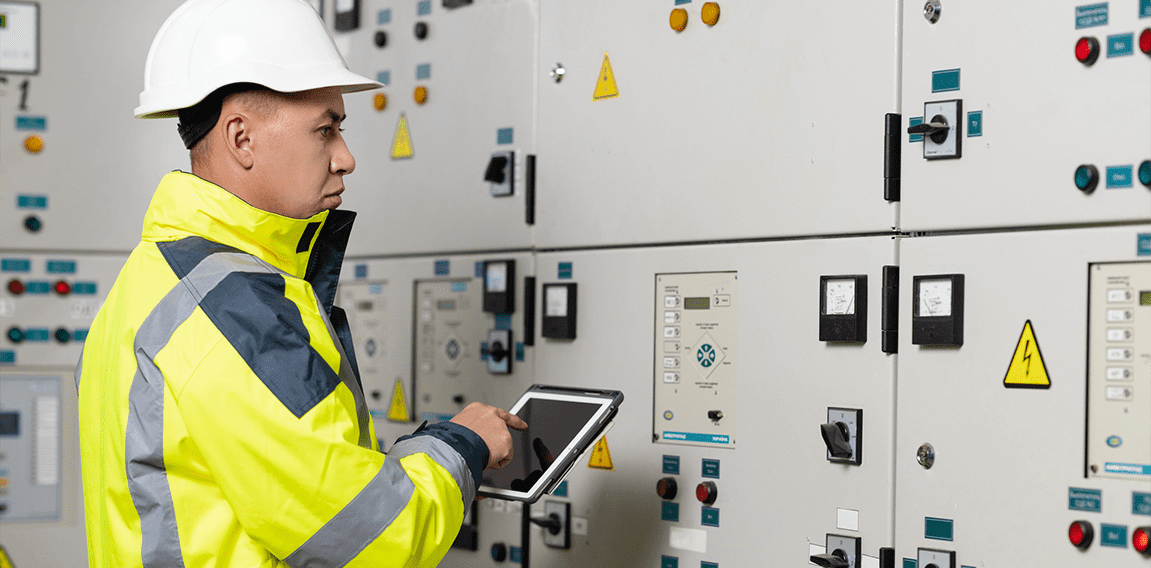NFPA 70B and Infrared Thermography Electrical Inspections
NFPA 70B, the National Fire Protection Association’s standard for Electrical Preventive Maintenance (EPM) programs, emphasizes the importance of regular thermography inspections. According to the 2023 edition, infrared thermography inspections are mandatory for all electrical equipment at least once every 12 months. For equipment that is in poor condition or has a history of issues, more frequent inspections may be necessary, such as quarterly or semi-annually.
NFPA 70B underscores the importance of prioritizing inspections for mission-critical and high-risk equipment. This includes:
- Transformers
- Substations
- High/Medium Voltage Switchgear
- High/Medium Voltage Lines
- Circuit breakers
- Fuses
- Control panels
- Busbars
By focusing on these components, organizations can maximize safety and uptime, ensuring that any potential issues are detected and addressed promptly. Proper documentation and history of temperature differences and inspection findings are crucial for maintaining an effective EPM program.
This ensures the safety and reliability of electrical systems in industrial facilities, commercial buildings, and large residential complexes. Inspections should prioritize mission-critical and high-risk equipment to maximize safety and uptime.
Proper maintenance, as outlined in NFPA 70B, is critical for reducing electrical hazards, extending equipment life, and maintaining operational efficiency. By adhering to NFPA 70B, organizations can reduce downtime, improve workplace safety, lower costs, achieve more sustainable electrical practices, and ensure compliance with industry standards.
How Infrared Thermal Inspections works
Electrical infrared thermography is a non-invasive diagnostic technique that helps identify potential electrical issues before they become costly and dangerous problems. By detecting infrared radiation emitted by electrical components, we can visualize and measure temperature variations, highlighting “hot spots” that indicate anomalies. Here’s a detailed look at how our process works:
Step 1: Pre-Inspection Planning
Assessment and Preparation Before the inspection begins, our certified thermographers perform a thorough assessment of your facility’s electrical systems. We identify critical components and create a customized inspection plan, ensuring comprehensive coverage.
Step 2: Equipment Setup
High-Tech Infrared Cameras Our experts use state-of-the-art infrared cameras designed specifically for electrical inspections. These cameras are capable of capturing high-resolution thermal images, providing accurate and detailed temperature readings.
Step 3: Initial Survey
Identifying Inspection Points We conduct an initial survey of your electrical systems to identify key inspection points. This includes electrical panels, switchboards, circuit breakers, transformers, and other vital components.
Step 4: Capturing Thermal Images
Infrared Scanning Our thermographers perform a meticulous infrared scan of the identified components. By capturing thermal images, we can detect temperature variations that indicate potential issues such as overloaded circuits, loose connections, or failing components.
Step 5: Analyzing Thermal Data
Detailed Data Analysis The captured thermal images are then analyzed using advanced software. Our experts interpret the data to pinpoint anomalies and assess their severity. This analysis allows us to determine if immediate action is required or if further monitoring is needed.
Step 6: Generating Reports
Comprehensive Documentation We generate detailed reports that include thermal images, temperature readings, and expert analysis. These reports provide clear and actionable insights, helping you understand the condition of your electrical systems and prioritize maintenance efforts.
Step 7: Recommendations and Follow-Up
Expert Advice Based on our findings, we offer recommendations for corrective actions and preventive measures. Our team is also available for follow-up inspections and support, ensuring your electrical systems remain safe and efficient.
Electrical infrared thermography is a proactive approach to maintaining your facility’s electrical health. By identifying issues early, you can prevent costly repairs, reduce downtime, and ensure the safety of your equipment and personnel.

